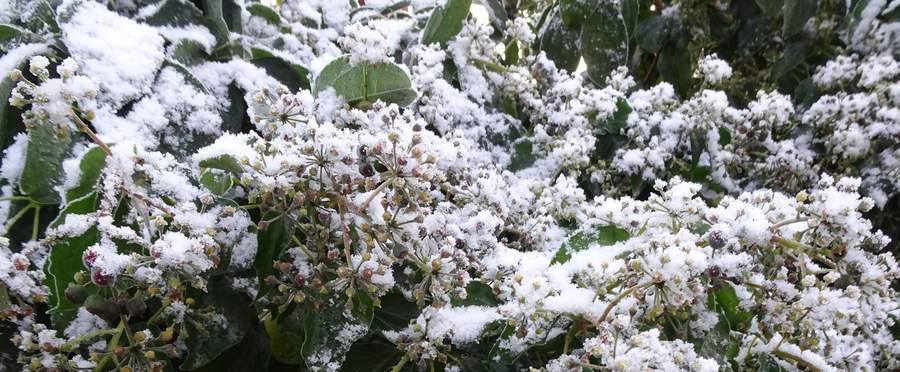Ivy (Hedera helix) is a fine-looking plant with waxy evergreen foliage and berries that are synonymous with the winter season. Its ability to spread quickly often makes it unpopular with humans but for wildlife, it’s a vital source of food and shelter.

Saving for a Rainy Day
During winter some creatures hibernate whilst others tough out the cold months as best they can.
Bumblebees, ladybirds, and some butterflies will seek shelter as it gets colder entering a dormant state until temperatures rise again and food becomes more readily available. For these creatures, the late autumn nectar that ivy provides is essential, it gives them a last-minute food source they can access right up until the moment they enter their dormant winter pause.
By comparison, honey bees overwinter as a colony and do not enter a dormant state. Instead, they stay active deep in their nest where workers will huddle around the queen ‘shivering’ to generate small amounts of heat from friction. To survive the long winter months the colony will live off nectar and honey reserves stored within their nest. Again, ivy and other late flowering plants will give them a vital final source of nectar available just before it becomes too cold to fly.
Winter Oasis
It’s not just the insects that benefit either, during the cold days of winter resident animals such as birds and small mammals will feed on the ivy’s winter berries which have been found to have the same weight for weight calorific value as Mars bars. They don’t, however, taste like Mars bars and are in fact poisonous to us humans, so don’t try cashing in on this winter crop yourself.

Bed and Breakfast
Ivy is also an important source of shelter from the punishing cold and dampness of the winter months. The thick mass of waxy, evergreen leaves hides an inner matrix of interwoven stems that provide an ideal roosting place for birds protecting them from the worst that the winter months have to offer.
When to Prune Ivy for Wildlife.
Ivy is a boisterous and hardy plant that is not backward in coming forward. It quickly grows spreading in all directions enveloping all in its path. Because of this, you may be asking yourself:
When is the best time to prune ivy to keep it under control whilst providing the maximum benefit to wildlife?
The answer is generally around late winter after the worst of the hard weather. This leaves the ivy for the wildlife for as long as possible whilst also giving it a full growing season to deliver next winter’s life-saving crop of flowers and berries.
But!
Leaving the crop for as long as possible is good, but, if you prune too late you may disturb early nesting birds. Some birds may nest as early as February but nesting times are becoming increasingly hard to predict due to climate change.
So…before you prune, consider the following:
- Check for nesting birds, watch the patch for busy parents and inspect it for any signs of nest building.
- If you can, leave some sections un-pruned, consider trimming a different part of your ivy patch each year.
- If in doubt – leave it be – untidy vegetation is great for wildlife and it’s always better to be safe than sorry.
ENH

